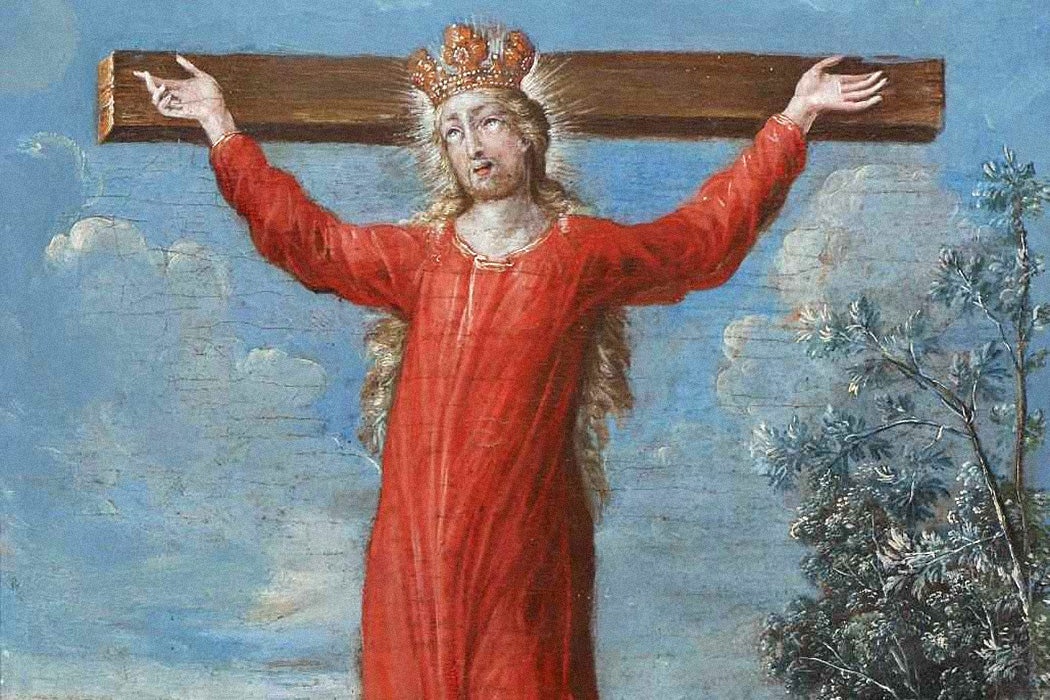In Catholic tradition, there are thousands of saints to whom a person might pray. Lewis Wallace explores why, starting in the fifteenth century, many chose to honor the bearded virgin Saint Wilgefortis.
According to the legend, which began appearing in manuscripts around 1400, Wilgefortis was a young princess who converted to Christianity and decided to remain a virgin bride of Christ. Her pagan father had her imprisoned. To escape, she prayed to be “disfigured” so that she would become unattractive to her suitor. God responded by causing her to grow a thick beard. Enraged, her father had her crucified.
The legend became popular across much of Europe in the late Middle Ages and Early Modern centuries and even featured in the first edition of Grimm’s Fairy Tales.
Wallace argues that Saint Wilgefortis fit into a number of existing tropes. The image of her on the cross followed a longstanding tradition of women identifying with Christ’s martyrdom and of feminine depictions of Christ.
Wilgefortis also came from a long line of virgin martyrs, a type of saint that received increasing attention starting in the thirteenth century. These stories often involved extreme asceticism, and sometimes included miraculous deformities that the women willingly endured to protect their virginity.
“Of course,” Wallace writes, “the anomaly of the Wilgefortis legend is the fact that her specific transformation is gendered; her so-called deformity is a beard, and she is ultimately depicted as crucified, bearded, and Christlike.”
This reflected another longstanding medieval tradition: female saints who dressed as men or acquired male characteristics. This might be a form of disfiguration or self-abnegation, but it also reflected the value placed on masculinity in Christian practice at the time and presented the women as figures of strength.
Wallace writes that Wilgefortis was particularly popular with women, whose worship sometimes involved unusual themes. She was sometimes known as Uncumber, a liberator or “unencumberer” of people burdened by difficulties, including women abused by their husbands. In a 1529 treatise opposing “superstitious” Catholic worship of the saints, Sir Thomas More described women praying to Wilgefortis to be freed of their husbands—perhaps by his death, or hers.
“Virgin martyrs were petitioned frequently enough for assistance with marriages, but Uncumber’s seems to be the only cult on record focused on losing, rather than gaining, a husband,” Wallace writes. He suggests that the assignment of this specialty to the saint may have flowed from her gendered transformation.
Weekly Newsletter
Another unusual practice was found in the alpine region of Tyrol, where some loyal to her dressed the body of Christ on old Romanesque crucifix statues in women’s clothing, transforming them into Wilgefortis (or Kümmernis, as she was known there).
“Dressed crucifixes, venerated as the female Saint Wilgefortis or Kümmernis, allow the humiliated female body and the humiliated body of Christ to appear not as juxtaposed equals, but as one continuous body,” Wallace writes. “Christ quite literally dwells within the image of Wilgefortis.”







